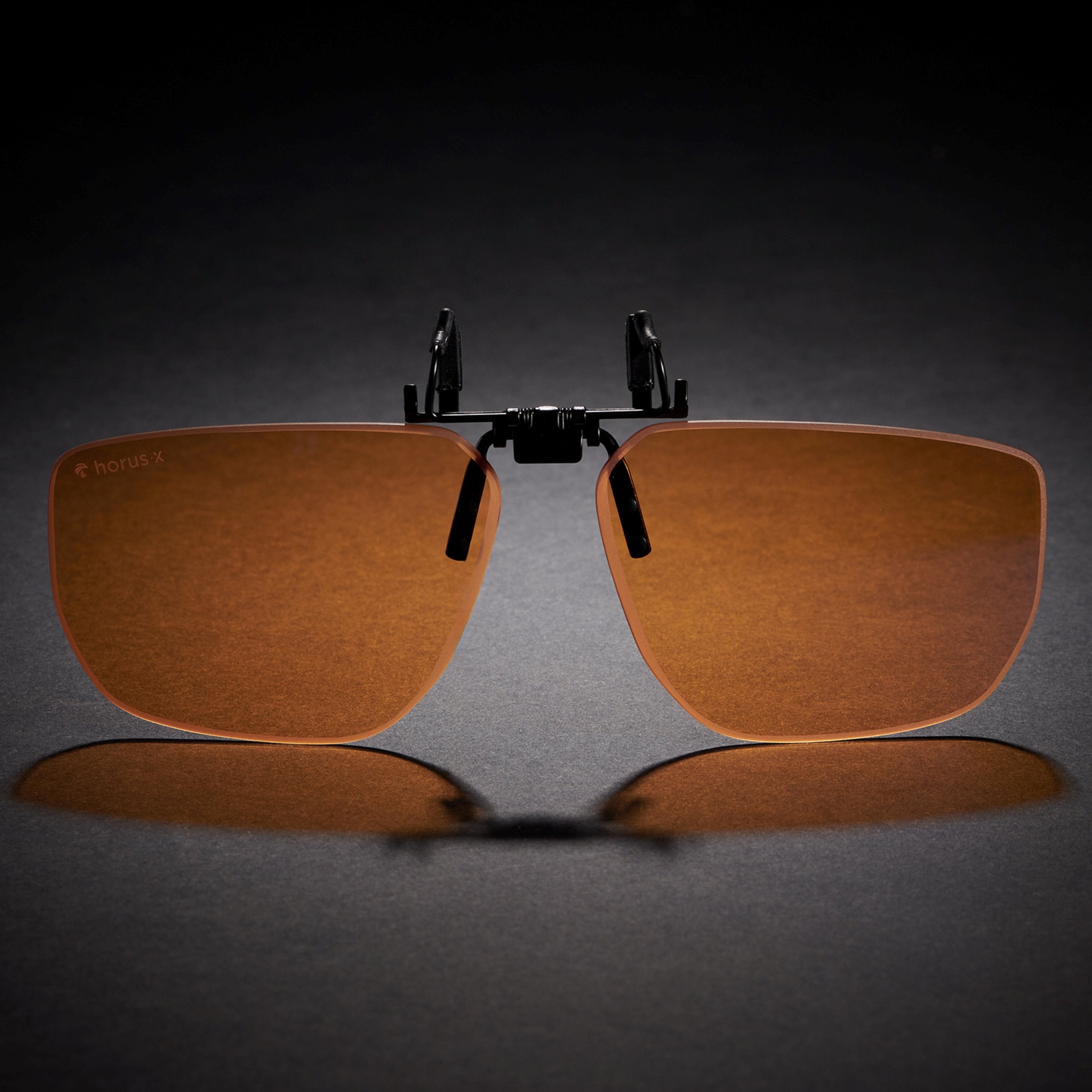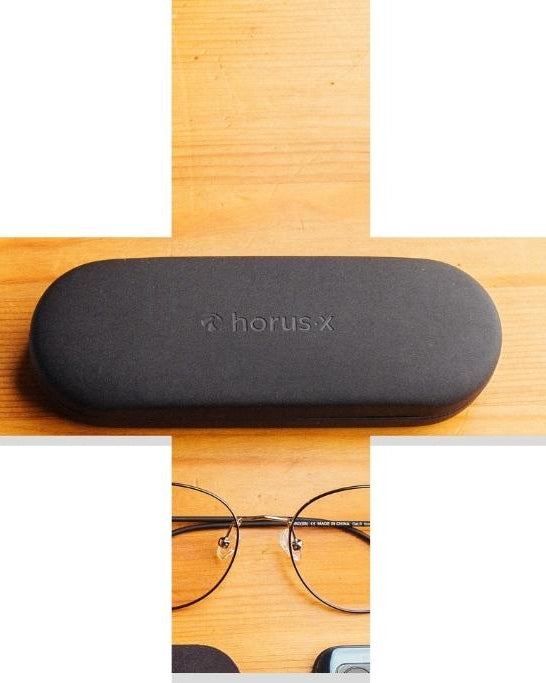Do you play or work long hours in front of a screen? Does your day sometimes just feel like an endless cycle from screen to screen as you stare blankly and doom scroll until the sun peeks through your curtains in the morning?
If so, well… you probably spend too much time looking at screens. But you already knew that. If you’re not willing to give up your screen habits, the least you can do is minimize your exposure to blue light. The screen type you look at has an impact on this. There’s a clear difference between the effects of LCD and LED screens.
Let’s look at which is better for your eyes and how to minimize the impact of blue light exposure.
What is the difference between an LED display and an LCD display?
LCD and LED TV, phone, and computer screens use two different technologies for image processing. One gives a much better, clearer image than the other, but at a much higher price point.
💡LED TV (and other) screens are basically LCD screens with better lighting. Kind of like all thumbs are fingers, but not all fingers are thumbs. That is, LED screens are always also LCD, but LCD screens aren’t always LEDs.
That’s why the question is LCD or LED: which is better for eyes?
Both types of displays use liquid crystals to form the pixels that make up the final image. What sets them apart is how these crystals are lit.
What is an LCD screen (Liquid Crystal Display)?

LCD displays use a layer of liquid crystals powered by an electric current and backlit by a neon tube. The neon, located at the back of the device, illuminates the crystals which are polarized or not depending on the current emitted.
LCD TV and computer screens block light, rather than emit it. This means they use fluorescent backlights to help form images.
The main advantage of LCDs is that they’re usually inexpensive.
Usually, LCDs are found in low-end smartphones and the old desktop computers you usually find in the library with their LCD montiors. Basically, imagine it’s 2004 again.
There are drawbacks to LCD screens:
- 🌈 Lack of color and depth of black
- 💔 Does not have a great longevity
- 🪫 Consumes a lot of electricity
- 🥵 Tends to heat up
What is an LED screen (Light-Emitting Diode)?

Nowadays, LED screens are the most commonly used. They’re in our television sets, cellphones, and our computers.
They’re more common than Elon Musk’s tweets.
The two types of LED screens:
☀️ Full-Array LED: The LEDs that illuminate the liquid crystals are placed on the entire surface of the screen. The device can vary the amount of light from the groups of LEDs locally, allowing deeper blacks to be displayed. The image is also more precise.
🔆 Edge-Lit LED: The LEDs are located on the sides, top and/or bottom edge of the screen. This makes it possible to make very thin screens, but the quality is a little less good than a Full-Array screen. There are also contrast problems in the sunshine for those who like watching TV outside.
What are the advantages of LED screens?
- 🪶 Less bulky: the absence of the neon tube reduces the size at the back of the screen meaning LED monitors and screens are smaller.
- 🎨 Better contrast: the blacks are much deeper and the colors much sharper. Overall, the image quality is better
- 🔋Lower energy consumption
- 😎 Heats up much less
What about OLED and QLED technologies?
OLED and QLED are the not-so-new (but still hot) choices on the market. OLED and QLED are also gradually replacing LCD TV and computer screens.
What do OLED and QLED screens offer that LCD and LED don’t?
The OLED display (Organic Light-Emitting Diode): where the LED display illuminates the liquid crystals with groups of diodes, the OLED TV or computer display has a light source for each pixel directly. The device can then turn an individual pixel off or on, allowing for much better contrast and exceptional image precision.
The QLED screen (Quantum Light-Emitting Diode): follows the same principle as the OLED screen with the only difference being an additional layer of phosphorus between the LEDs and the liquid crystals. The phosphor, when illuminated, takes on a yellow color which accentuates the blue spectrum of the LED. Thus, the liquid crystal backlight is closer to white than blue, creating a color that is much closer to reality than all other screens.
LCD or LED: Which is better for eyes?
There are no studies that demonstrate one technology as more harmful than the other between LED and LCD. But there are certain unavoidable facts, that still make choosing between the two an important decision.
- ☯ LED screens provide better readability due to their contrast, than LCD. This means less digital eye strain which can be harmful and have long term negative effects.
- 🔅LED screens and monitors usually offer more robust dimming options and various other screen comfort tweaks. All without sacrificing visual quality. That includes directly integrated blue light reduction options (which you should take full advantage of).
- 🖥LEDs usually provide a wider viewing angle without compromising image quality. This is the screen you want to watch Avatar on.
- 🔵LEDs also seem to emit more harmful blue light than LCDs. However, this is partially negated by the directly integrated blue light reduction applications that most screens have.

LCD or LED screens? Advice for users who need good graphics
If you’re a gamer and want to see Horizon Forbidden West in all its graphical glory, we strongly recommend an LED monitor or TV for crisp image quality.
If you’re a video editor, content creator, visual designer, or anything else that requires creating your masterpiece on a screen we also suggest you use an LED screen. LCDs are not suitable for these creative lines of work that rely on fast image processing. LCDs usually have low refresh rates, and poorer image depth and the technology often limits your screen size, making it harder to zoom in and photoshop that zit off someone’s nose.
A note on the harmful effects of blue light:
The National Library of Medicine warns about the harmful effects of blue light and LED screens. While LEDs might be better for us visually, studies on their impact to health are inconclusive and it requires further research.
A 2022 study found that exposure to LEDs at night increases respiratory quotient and decreases fat oxidation which has a negative impact on your health. It can even lead to AMD (age-related macular degeneration), a degenerative eye disease that can cause blindness; although studies are still inconclusive on its effects in this area.
The same study also found that blue light late at night from any device negatively impacts your health and disrupts your circadian rhythm. This is because blue light affects the production of melatonin, the sleep hormone, thus disrupting your sleep cycle.
LCD or LED: which is better for eyes? QLED is the one screen to rule them all
If possible, and not too expensive, QLED is actually recommended above both. That’s because of the QLED yellow filter which compensates for the blue spectrum of the LED.
This filter actively participates in reducing the amount of harmful blue light that reaches your eye, thus having a positive impact on your eye health.
QLEDs have all the advantages of the regular LED screens but with less of the drawbacks!
How to protect yourself against the blue light from LED screens
Its always important to protect yourself from artificial blue light wherever possible. We get enough natural blue light from the sun as it is! In this WALL-E age of screens and laziness, we’re really not helping ourselves with our overexposure to blue light.
To negate the negative impact of blue light and screens, we have some tips and recommendations:
Reduce your screen time
Unless you’re someone with massive political power, the world isn’t going to end if you put your phone down a bit more often.
It’s not easy but less screen time means reducing the harmful impact of blue light coming from all your LED screens. If you’re someone whose whole life and job revolves around a computer screen this can be more challenging, but there are still some small steps you can take to improve your overall quality of eye health (and life).
- When you take breaks try and go for a walk, get some fresh air, or read a book rather than spending the whole time mindlessly scrolling through Tik Tok or Instagram
- Don’t take your phone with you when you go to the bathroom. We know you do you filthy animal.
- Don’t keep your cellphone in your room at night. Put it somewhere else and get used to falling asleep and waking up without your phone being the last (and first) thing you see.

Use software that reduces blue light from screens
There are programs that directly impact the light emitted from your screen and reduce the subsequent blue light.
There are plenty of applications online that can do this job and a lot of them are even free – like our recommendation, f.lux.
The best part is, a lot of these programs are totally free. The worst part is, it makes everything look like your dog cocked their leg on your screen. (AKA: everything is tinged yellow).
It’s something your eyes adjust to over time; however it can negatively impact the full effect and appreciation of things like the sharp quality of a PS5 game.
Likewise, if you’re someone who needs accurate colors to work, like a graphic designer, then this is not recommended for you! Or at the very least, remember to turn it off or everyone will suddenly be questioning your choice of color schemes and if you’ve suddenly gone colorblind.
Wear blue light glasses
In both cases, there’s an easy solution that helps protect you from the harmful spectrum of blue light emitted by LCD or LED screens: blue light glasses. Anti-blue light glasses minimize the impact on your health by reducing the amount of blue light you absorb. They’re your very own Matrix barrier against blue light.
Don’t forget, all screens emit artificial blue light, and the sun even emits natural blue light. Even integrated reduction filters don’t help fully negate that. Especially from the sun…
An additional filter like anti-blue light glasses is super effective in ensuring you’re fully protected.
We recommend coated glasses to protect yourself from LED screens. Horus X glasses filter out up to 86% of the harmful spectrum of blue light and we offer a range of styles, types and filters to suit every person’s need:
- If you are an interminable gamer, we recommend the Horus X Gaming range.
- If you are a professional or a student who mainly uses computers in work hours, the Horus X Office range are probably more your style.
LCD or LED: which is better for eyes? Final thoughts
If you can take advantage of the latest screen technologies to protect your eyes from blue light, then we strongly recommend purchasing QLED screens. In addition to toning down the blue color, the QLED display has exceptional image quality. If QLED is out of your price range however, our closest recommendation would be LED screens.
Finally, use a screen to read, we recommend that you choose readers that use electronic ink. This technology does not use backlighting and therefore isn’t as harsh on your eyes.

















Comments
Bravo pour ce panorama des Techniques d’affichage des écrans et les risques sur la vue qu’elles comportent.
Je n’y connaissais rien, je pense maintenant être éclairé et pas que dans le spectre bleu.
Merci et bravo encore.